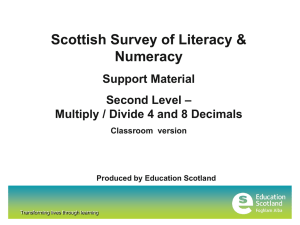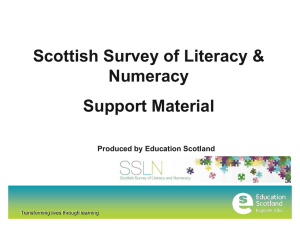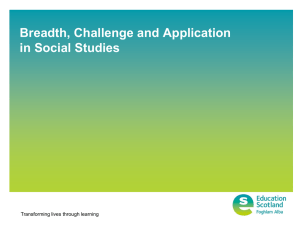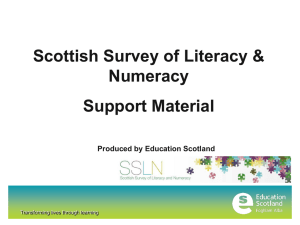Scottish Survey of Literacy & Numeracy Support Material Produced by Education Scotland
advertisement
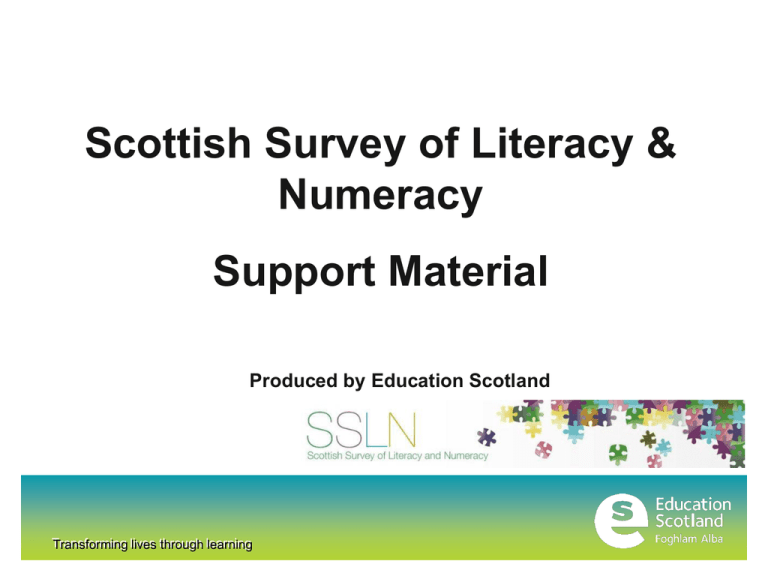
Scottish Survey of Literacy & Numeracy Support Material Produced by Education Scotland Transforming Transforming lives lives through through learning learning First Level - Multiplication • Survey questions such as 6 x 17 and 5 x 42 caused problems for more than 65% of pupils. • Is it because these problems go beyond normal table facts? • Do we make enough links with visual representations when investigating multiplication? Transforming lives through learning This section of work investigates multiplication using: • Rectangles • Number lines • Mental strategies and continually asks that links are made and learning is integrated. It reminds us that the square numbers arise when the rectangle becomes a square. Transforming lives through learning • Understanding place value and being able to split numbers into tens and units is key. • Chunking within known table facts is essential. • Knowing that 17 can be split into 10 + 7 is key to using a rectangular array to solve multiplication problems. • Making links with the area of a rectangle reinforces an integrated approach to learning. Transforming lives through learning • Understanding that multiplication is a quick way to perform repeated addition is an essential milestone of progression. • Using the empty number line to demonstrate this concept can assist understanding for a large number of learners. Transforming lives through learning • The ability to double a number can make multiplication an easier process. • Investigating why 6 x 35 is the same as 3 x 70, using number lines or rectangles, promotes deep understanding. • The ability to manipulate numbers is essential for high level numeracy. Transforming lives through learning • The number line demonstrating that 5 x 42 must be half of 10 x 42 is a good opener for more problem solving. • How could we work out 7 x 42? • Would you prefer 10 x 42 – (3 x 42) or would 5 x 42 + (2 x 42) be easier? Transforming lives through learning • The use of rectangular arrays to demonstrate the multiplication process has great potential. • If First level pupils are comfortable with the concept, how could these arrays be built upon to support understanding when multiplying fractions, decimal fractions or even algebraic terms? Transforming lives through learning www.educationscotland.gov.uk
